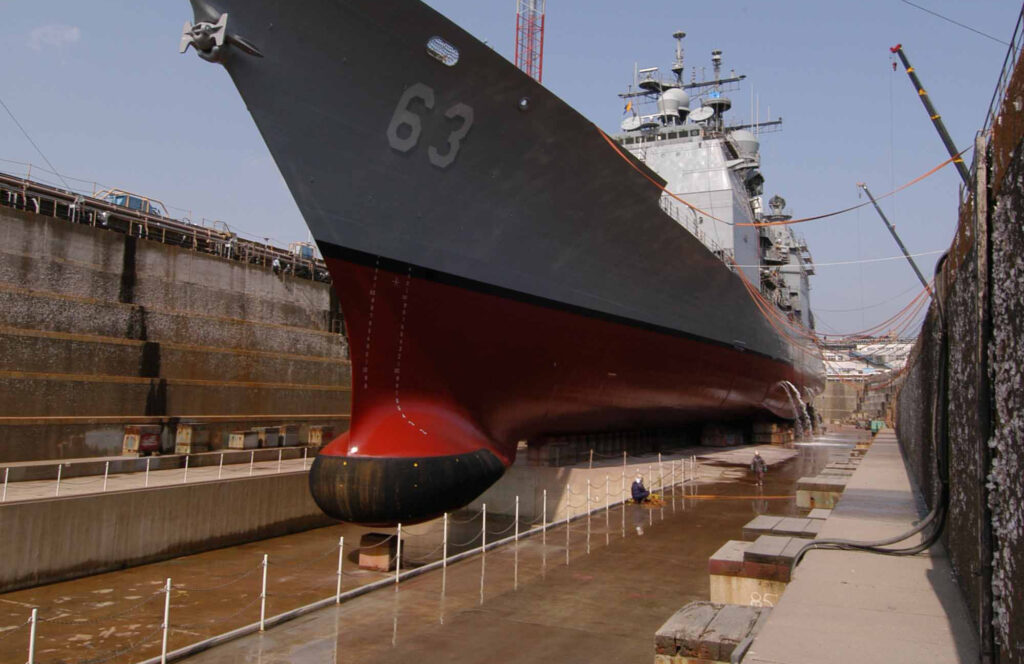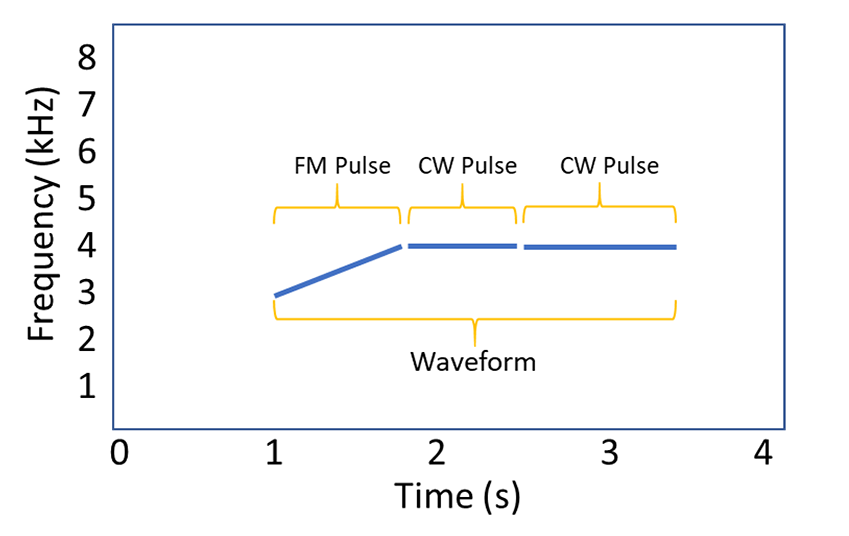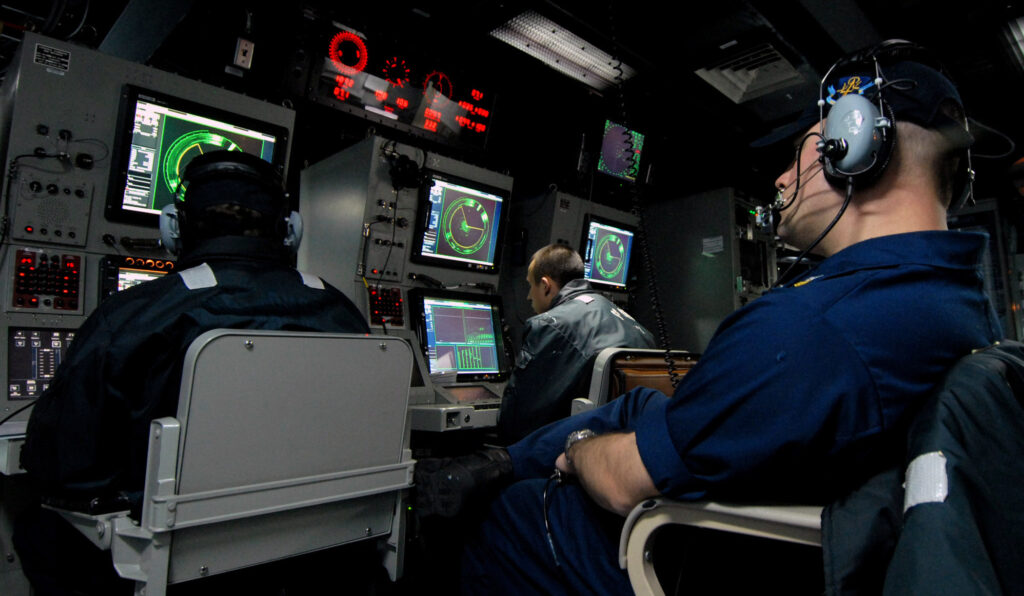Mid-frequency Active Sonar
Mid-frequency active (MFA) sonars are used by navies around the world primarily to detect submarines. The U.S. Navy classifies MFA sonars as those that emit frequencies between 1 kHz and 10 kHz while some other countries classify MFA with different frequency ranges.

One modern U.S. hull-mounted MFA sonar, the SQS-53C, is used on many U.S. Navy destroyers and frigates. The active sonar projector array is arranged in a curved geometry permitting a variety of transmit beams (for more about projector arrays see Technology > Projector Array). The SQS-53C sonar operates at 2.6 kHz and/or 3.3 kHz and often at a nominal source level of 235 dB (1µPa at 1m).

The sonar waveform from the SQS-53C system can last several seconds (waveform duration) with a waveform interval period of between twenty and thirty seconds. MFA sonars can produce a variety of signals, for example, a single frequency tone (continuous wave), multiple frequency tones, or a frequency modulated pulse (upsweep or downsweep). Each sonar pulse type is designed for specific situations such as detecting movement or detecting an object in a reverberant environment.

Modern MFA sonars are integrated aboard U.S. Navy ships as part of an antisubmarine system used for search, detection, localization, and tracking as well as providing information for weapons control and guidance. As seen in the figure above, the system displays images and audio. A group of U.S. Navy ships will often operate a variety of sonar systems simultaneously, even coordinating the duty cycle so no two systems emit at the same time.
Additional Links on DOSITS
- Technology Gallery > Hydrophone Arrays
- Technology Gallery > Projector Array
- Technology Gallery > Sonar Technology
- Technology Gallery > SURTASS LFA Sonar Technology
- Technology Gallery > Sonobuoys
- People > How is sound used to find submarines?
- Animals > Potential effects of sound on marine mammals
Additional Resources
- Department of the Navy, Environmental Planning and Compliance – NEPA
- Federation of American Scientists (FAS), Run Silent, Run Deep.
- Bill Cabbage, ORNL and Submarines – Measuring the Sound of Silence.
- National Research Council (U.S.) (Ed.). (2003). Ocean noise and marine mammals. National Academies Press.
- United States, Department of the Navy, (2001). Joint interim report : Bahamas marine mammal stranding event of [15]-16 March 2000. NOAA Library
- Standardized Unclassified Nomenclature to Describe Navy Sonar Signals (Technical Report No. 6843). (2022). Naval Information Warfare Center Pacific. https://apps.dtic.mil/sti/citations/AD116703232